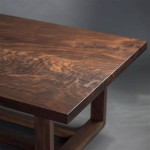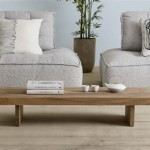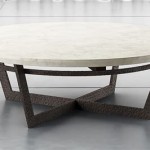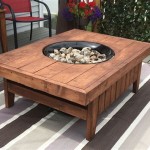Advantages of Glass and Wood Coffee Tables and Their End-of-Life Span
Coffee tables are ubiquitous pieces of furniture found in living rooms, reception areas, and various other spaces. They serve as functional surfaces for placing beverages, books, remote controls, and decorative items, while also contributing significantly to the overall aesthetic of a room. Two popular materials for coffee tables are glass and wood, each offering distinct advantages in terms of style, durability, and environmental impact. This article will delve into the benefits of glass and wood coffee tables, exploring their unique characteristics and examining their end-of-life considerations.
Aesthetic Appeal and Design Versatility
One of the primary reasons consumers choose glass or wood for their coffee tables is the aesthetic appeal they offer. Glass coffee tables exude a sense of modernity and sophistication. Their transparent nature allows natural light to permeate the room, creating an illusion of spaciousness. Glass can be molded into various shapes and sizes, from sleek, minimalist designs to more intricate, sculptural forms. Tempered glass, a common choice for coffee tables, is known for its strength and resistance to shattering, making it a safe and visually appealing option.
Wood coffee tables, on the other hand, provide a sense of warmth, natural beauty, and timeless elegance. The inherent grain patterns and textures of different wood species add character and depth to any living space. Wood can be stained, painted, or left in its natural state, offering a wide range of aesthetic possibilities. From rustic farmhouse styles to contemporary designs, wood coffee tables can complement a variety of interior design themes. Furthermore, the tactile quality of wood offers a sensory experience that glass often lacks.
The design versatility of both materials allows for creative combinations. Coffee tables often feature a glass top paired with a wooden base, or vice versa. This hybrid approach leverages the strengths of both materials, creating visually striking and functional pieces of furniture. For instance, a glass top can showcase the intricate details of a handcrafted wooden base, or a wooden top can provide a solid, grounding element atop a modern metal and glass frame.
The choice between glass and wood often depends on the desired aesthetic and the overall design scheme of the room. Glass is generally preferred in contemporary, minimalist settings, while wood is often favored in more traditional or rustic spaces. However, both materials can be adapted to suit a wide range of styles, making them versatile choices for any home.
Durability, Maintenance, and Functional Considerations
The durability and maintenance requirements of glass and wood coffee tables are important factors to consider when making a purchase. Tempered glass, as mentioned earlier, is highly durable and resistant to shattering. It can withstand significant weight and is less prone to scratching than standard glass. Cleaning glass surfaces is relatively easy, requiring only a soft cloth and a glass cleaner to remove fingerprints, smudges, and dust. However, glass can still be susceptible to scratches from abrasive materials, and care should be taken to avoid placing sharp objects directly on the surface.
Wood coffee tables are known for their robustness and longevity. Hardwoods such as oak, maple, and walnut are particularly durable and can withstand heavy use. The finish applied to the wood plays a crucial role in its protection against scratches, stains, and moisture. Properly sealed and finished wood surfaces are relatively easy to clean, typically requiring only a damp cloth and mild soap. However, wood is susceptible to water damage and should be protected from spills and excessive humidity. Regular polishing or waxing can help maintain the luster and protect the finish of wooden coffee tables.
In terms of functionality, both glass and wood coffee tables offer practical benefits. Glass tops provide a smooth, even surface for placing items, and their transparency allows for easy visibility of objects placed underneath. Wood tops offer a more solid and stable surface, which may be preferable for those who frequently use their coffee table for eating or working. Some coffee tables incorporate storage compartments or drawers, which can be particularly useful for organizing living room essentials. The choice between glass and wood in terms of functionality often depends on individual needs and preferences.
The weight of the coffee table is another factor to consider. Glass coffee tables tend to be lighter than solid wood tables, making them easier to move and reposition. However, lighter tables may be less stable, particularly on uneven surfaces. Solid wood tables, on the other hand, are heavier and more stable, but may be more difficult to move. The size and shape of the coffee table should also be considered in relation to the size and layout of the room. A large coffee table may overwhelm a small space, while a small coffee table may be insufficient for larger rooms.
End-of-Life Span and Environmental Impact
The environmental impact of glass and wood coffee tables is becoming an increasingly important consideration for environmentally conscious consumers. The end-of-life span of these materials and the potential for recycling or repurposing are key factors to evaluate.
Glass, being a recyclable material, offers significant environmental benefits. Recycled glass can be used to manufacture new glass products, reducing the need for virgin raw materials and conserving energy. However, the recycling rate for glass varies depending on local infrastructure and policies. Tempered glass, which is commonly used for coffee tables, is not always readily recyclable due to its unique properties. It often requires specialized processing to be recycled effectively. Therefore, it’s crucial to check with local recycling facilities to determine whether tempered glass is accepted.
Wood, being a natural material, is biodegradable and renewable. However, the environmental impact of wood coffee tables depends on the source of the wood and the manufacturing processes used. Wood harvested from sustainably managed forests is a more environmentally responsible choice than wood from illegally logged or unsustainable sources. Sustainable forestry practices ensure that forests are replanted and managed in a way that protects biodiversity and ecosystem health. Certifications such as the Forest Stewardship Council (FSC) can help consumers identify wood products from sustainable sources.
The finishes applied to wood coffee tables can also impact their environmental footprint. Some finishes contain volatile organic compounds (VOCs), which can contribute to air pollution. Choosing low-VOC or water-based finishes can help minimize these emissions. Additionally, the manufacturing processes used to create wood coffee tables can generate waste and consume energy. Choosing manufacturers that prioritize sustainable practices and minimize their environmental impact is a responsible choice.
When a glass or wood coffee table reaches the end of its life, there are several options for disposal or repurposing. Recycling is the preferred option for glass, provided that it is accepted by local recycling facilities. Wood can be composted or used as mulch, although this may not be feasible for treated or finished wood. Another option is to donate the coffee table to a charity or resale shop, where it can be given a second life. Alternatively, the coffee table can be repurposed for a different use, such as a bench, a side table, or a decorative element.
The longevity of a coffee table also plays a role in its environmental impact. A well-made, durable coffee table will last longer, reducing the need for frequent replacements. Investing in high-quality materials and construction can extend the lifespan of a coffee table and minimize its environmental footprint over time. Proper care and maintenance can also help prolong the life of a coffee table and prevent premature disposal.
Ultimately, the choice between a glass and a wood coffee table involves balancing aesthetic preferences, functional requirements, durability considerations, and environmental concerns. By carefully evaluating these factors, consumers can make informed decisions that align with their values and contribute to a more sustainable future.

Things You Need To Know Before Large Coffee Tables

19 Coffee Tables With Storage To In 2024 All Our Picks

Designer Coffee Tables Archipro Au

Glass Table Top Express Toughening Ltd

Designer Coffee Tables Archipro Au

Round Coffee Table Reclaimed Wood Metal Base Industrial Modern

Modern Coffee Table Square Open Shelf Made From Reclaimed Wood

Meyer Cross Inez 32 In Brass Round Glass Coffee Table Ct1519 The Home Depot

Vitra Noguchi Coffee Table Transpa Walnut Made In Design

Round Coffee Table Reclaimed Wood Metal Base Industrial Modern
Related Posts








